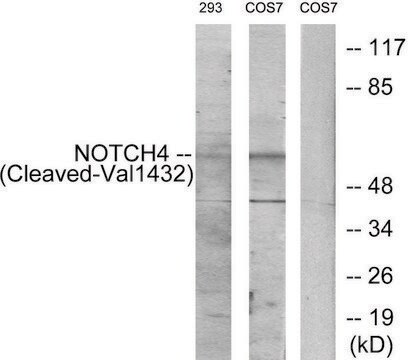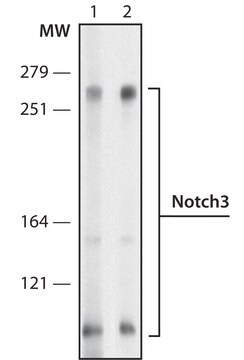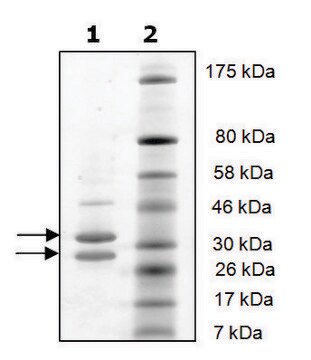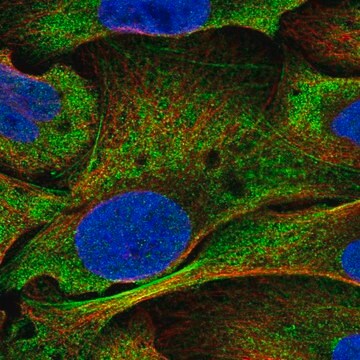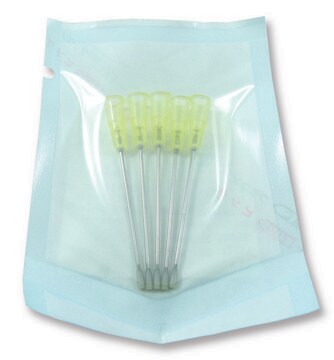MABC594
Anti-NOTCH 3/N3ECD Antibody, clone 1E4
clone 1E4, 1 mg/mL, from mouse
Sinónimos:
Neurogenic locus notch homolog protein 3, Notch 3, Notch 3 extracellular truncation, Notch 3 intracellular domain, N3ECD Domain, Ectodermal N3ECD, N3ECD
About This Item
Productos recomendados
biological source
mouse
Quality Level
antibody form
purified immunoglobulin
antibody product type
primary antibodies
clone
1E4, monoclonal
species reactivity
human
concentration
1 mg/mL
technique(s)
electron microscopy: suitable
immunocytochemistry: suitable
western blot: suitable
isotype
IgG1κ
NCBI accession no.
UniProt accession no.
shipped in
wet ice
target post-translational modification
unmodified
Gene Information
human ... NOTCH3(4854)
General description
Specificity
Immunogen
Application
Immunohistochemistry Analysis: A representative lot of this antibody was used to detect NOTCH 3 in Huamn vascular smooth muscle cells & smooth muscle cells of vessels from CADASIL brain tissue (Jouet, A., et al. (2000) Journal of Clinical Investigation. 105(5):597-605).
Electron Microscopy: A representative lot of this antibody was used to detect NOTCH 3 in smooth muscle cells of vessels from CADASIL brain tissue (Jouet, A., et al. (2000) Journal of Clinical Investigation. 105(5):597-605).
Immunohistochemistry Analysis: A representative lot of this antibody was used to detect NOTCH 3 in vessels of a CADASIL patient (Rouchox, M.M., et al. (2003) American Journal of Pathology. 162(1):329-342).
Immunohistochemistry Analysis: A representative lot of this antibody was used to detect NOTCH 3 in Human colorectal carcinoma (Serafin, V., et al., (2011) Journal of Pathology. 224(4):448-60).
Apoptosis & Cancer
Developmental Signaling
Quality
Western Blotting Analysis: 1 µg/mL of this antibody detected NOTCH 3 & the ectodermal domain (N3ECD) in 10 µg of MCF-7 cell lysate.
Target description
This antibody detects both the full length NOTCH 3 protein (~260 kDa) and the ectodermal domain N3ECD (~210 kDa).
Physical form
Storage and Stability
Disclaimer
¿No encuentra el producto adecuado?
Pruebe nuestro Herramienta de selección de productos.
Storage Class
12 - Non Combustible Liquids
wgk_germany
WGK 1
flash_point_f
Not applicable
flash_point_c
Not applicable
Certificados de análisis (COA)
Busque Certificados de análisis (COA) introduciendo el número de lote del producto. Los números de lote se encuentran en la etiqueta del producto después de las palabras «Lot» o «Batch»
¿Ya tiene este producto?
Encuentre la documentación para los productos que ha comprado recientemente en la Biblioteca de documentos.
Nuestro equipo de científicos tiene experiencia en todas las áreas de investigación: Ciencias de la vida, Ciencia de los materiales, Síntesis química, Cromatografía, Analítica y muchas otras.
Póngase en contacto con el Servicio técnico